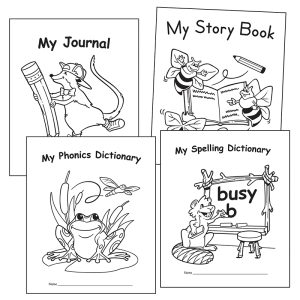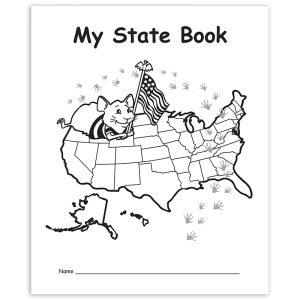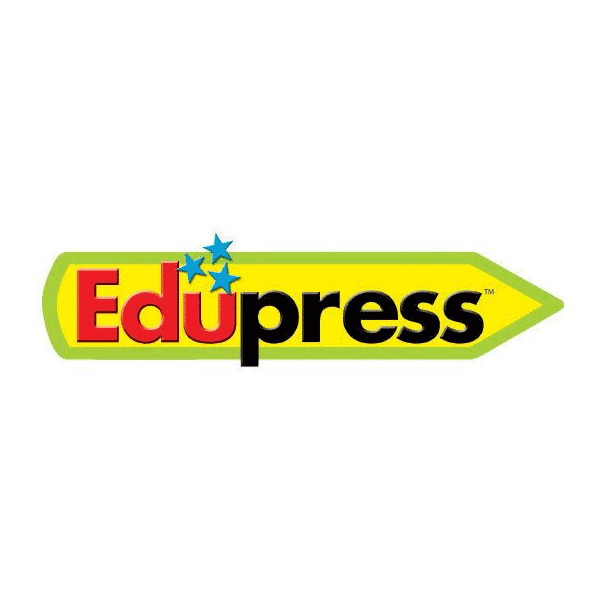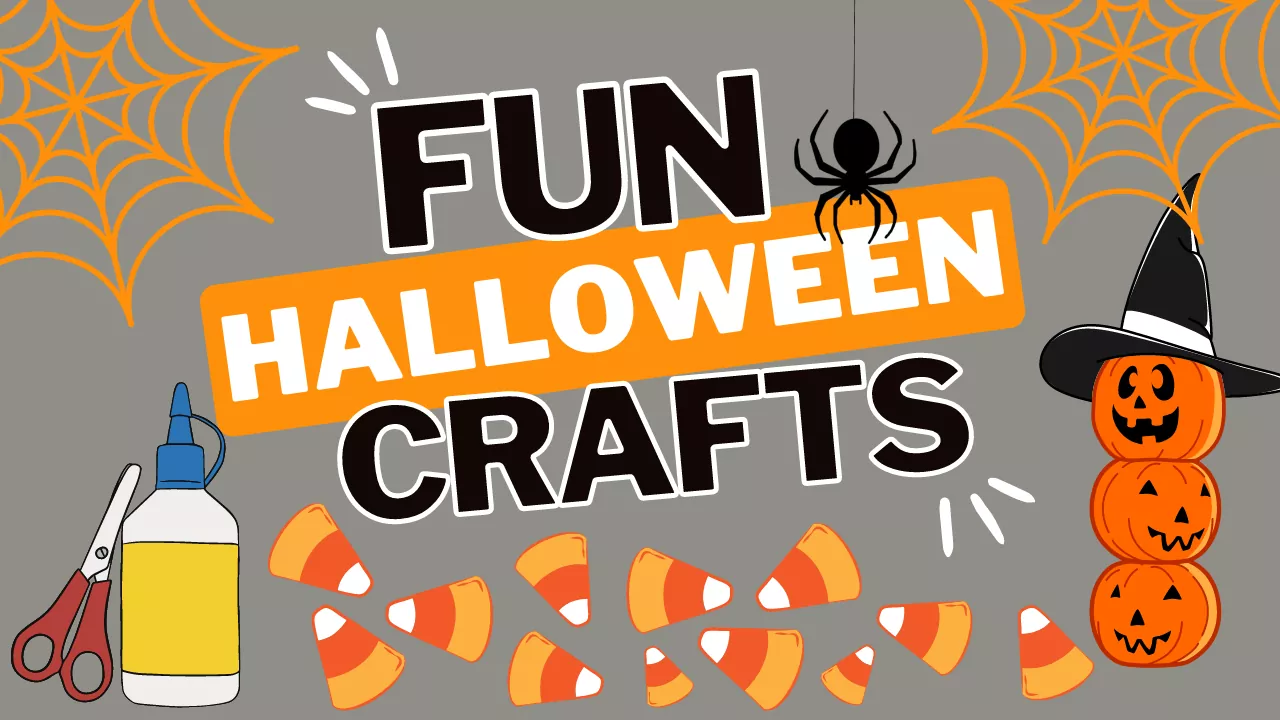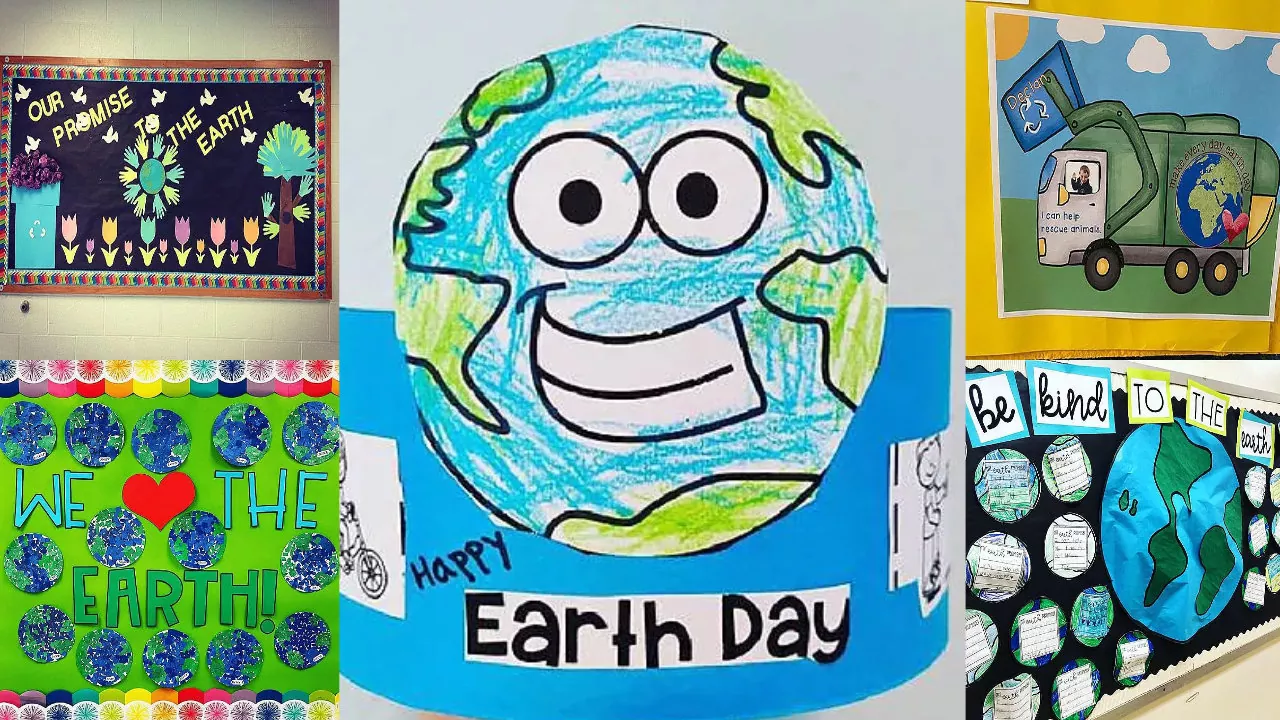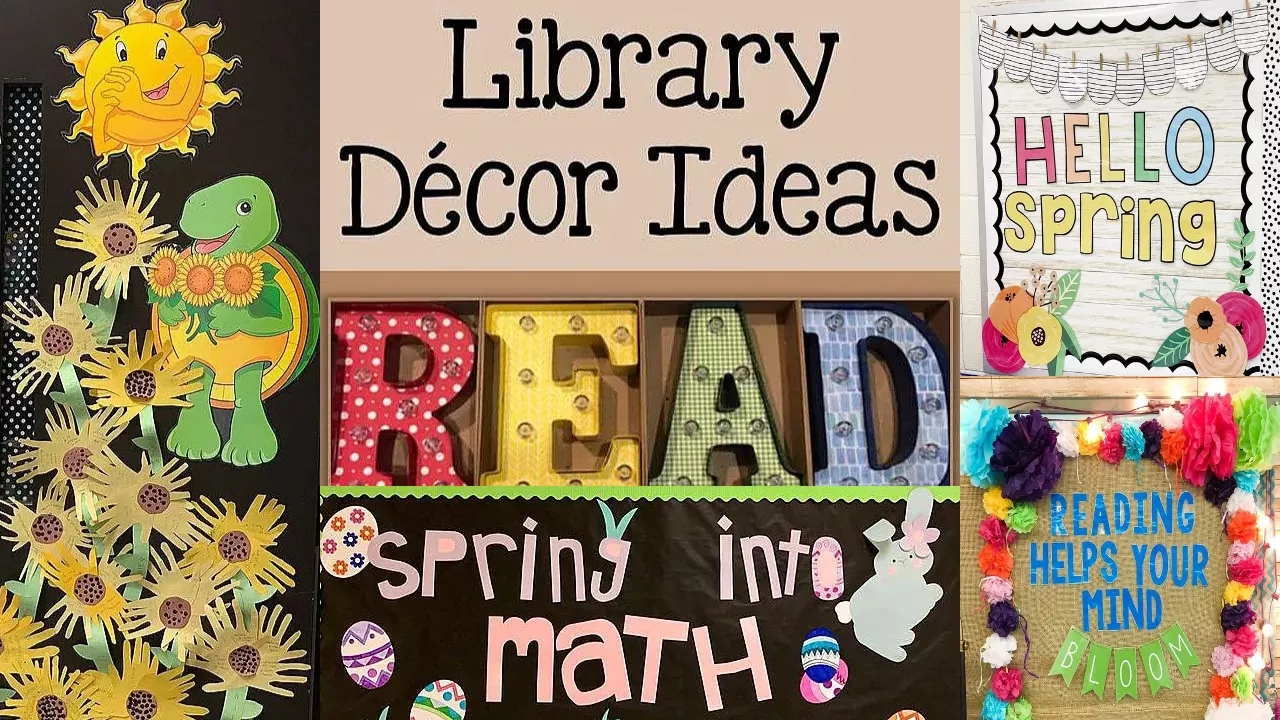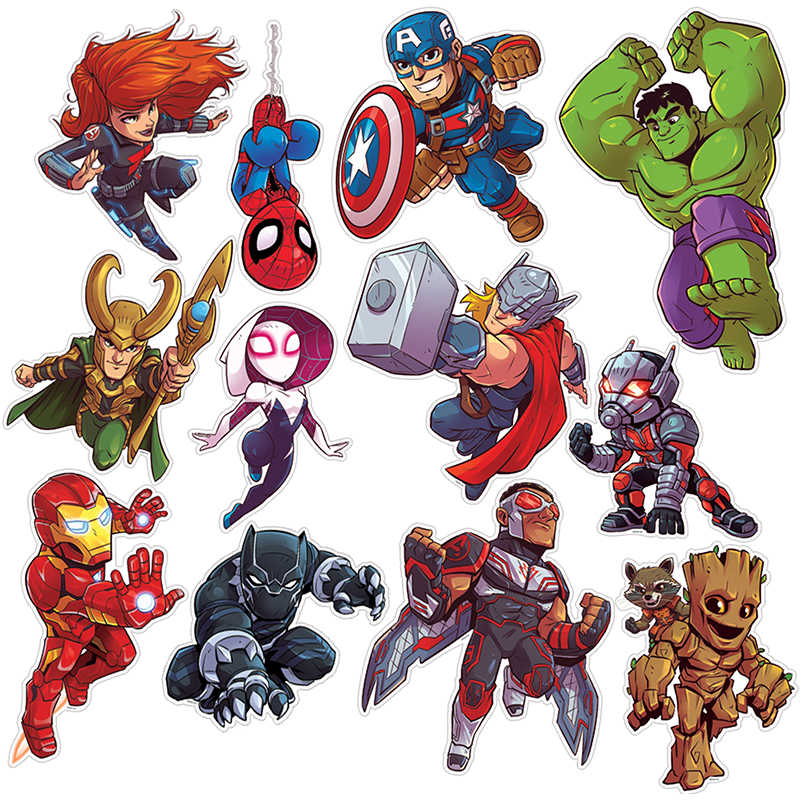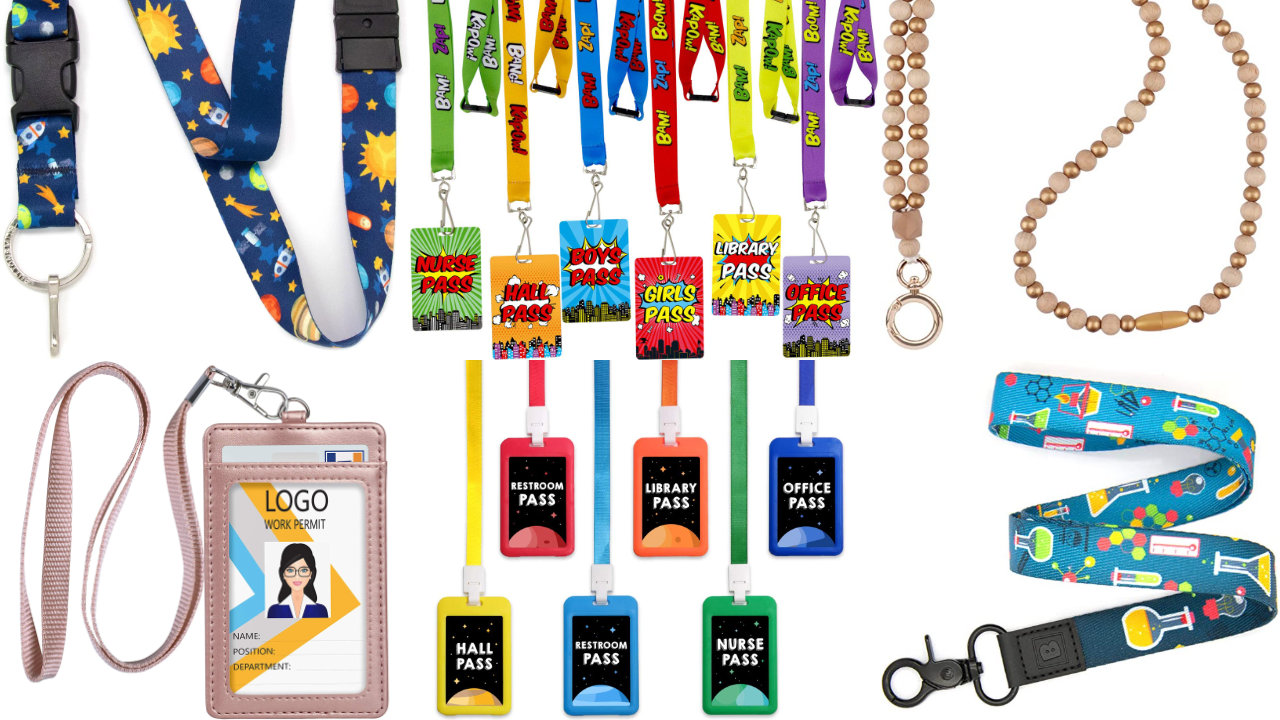Can You Make Sense of It?
Spoonerisms Activity
Some people are amused by spoonerisms, some are annoyed by them, and others are plagued by them. Spoonerisms appear unexpectedly, and they are often humorous. There have been some historic spoonerisms uttered by famous people, and countless spoonerisms that everyday speakers hoped no one had really heard. One dictionary cites, “It is kisstomary to cuss the bride” as a good example of Reverend W. A. Spooner’s (1844-1930) inclination to interchange the initial sounds of words. You may remember several that you like better.
A marvelous time to use this unit would be when someone has committed a spoonerism or malapropism of some kind, but the initiating activity is engaging enough that you can lead into it with just a remark or two about how easy it is for us to get tangled up in our speech.
WORKSHEET & Sample PDF Activity
[adinserter block=”2″]
Sample PDF Activity
[adinserter block=”3″]
Objectives:
• Reassembling eight spoonerisms—Students will rearrange the initial sounds of the words so that the sentences make sense. The sentences shouldn’t pose too much of a challenge to your students, but if anyone needs a little help, you can illustrate the idea by transposing the initial sounds of his or her name. For example, Jacob Miller would be “Macob Jiller.”
• Devising spoonerisms and putting them in a story—This activity is meant to get your students to do a little writing, rather than to have them write a serious composition. Every student should be able to embed one or two spoonerisms into a very short story. Have your students organize themselves into pairs and exchange their stories.
• Titling the story—Many times it is a difficult task to compose a good title for a story, even a very brief one. There are two common approaches to composing titles. One is to state the theme or what it is about. When this method is followed, the author often has a title in mind before the actual writing begins. A different approach is for the author to finish his or her writing and then select some element in the piece to use in the title. Encourage your students to entice their readers with a word or two in their titles that will arouse curiosity.
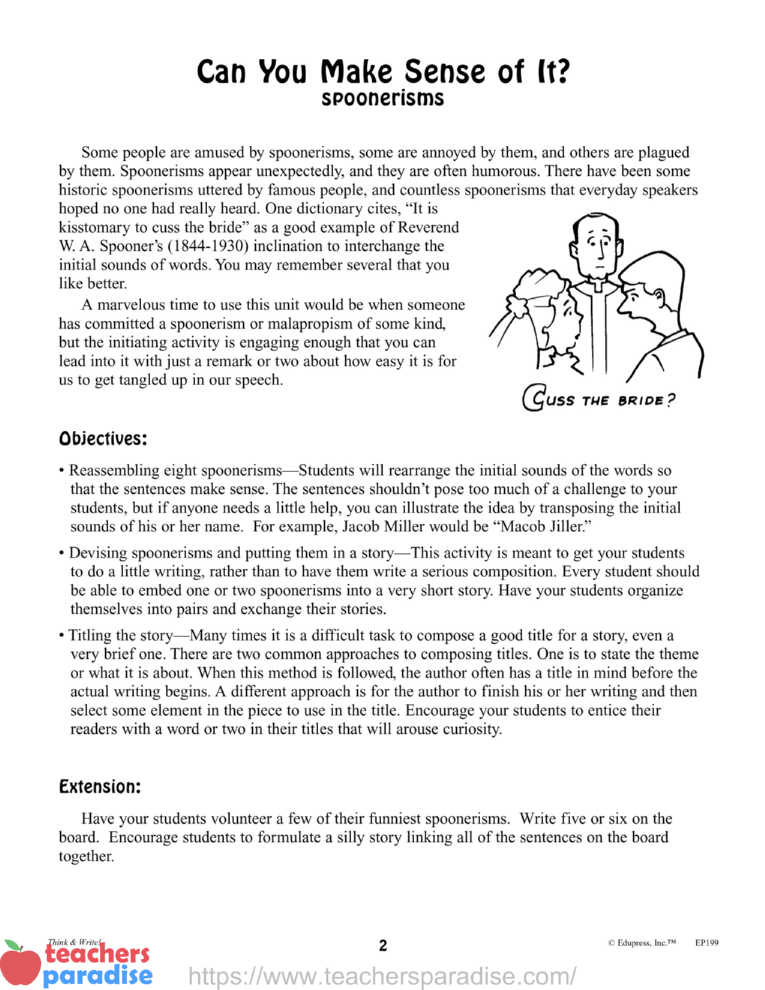
Extension:
Have your students volunteer a few of their funniest spoonerisms. Write five or six on the board. Encourage students to formulate a silly story linking all of the sentences on the board together.
Can You Make Sense of It?
- See if you can make sense of the eight peculiar sentences below. The trick is to find where two words have mixed-up sounds. For example, in the sentence “Can you come to high mouse?” the last two words have exchanged their beginning sounds. This interchanging of the initial sounds of words is called a “spoonerism.” It is named after Reverend W.A. Spooner, a man who frequently did this naturally … and often humorously.
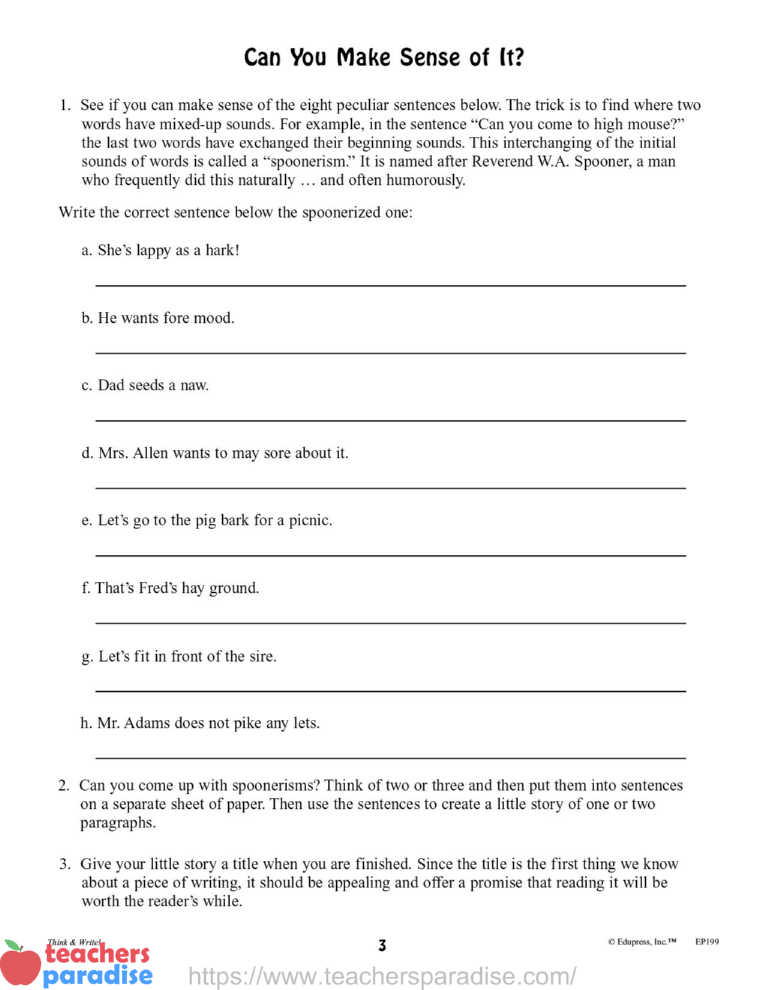
Write the correct sentence below the spoonerized one:
a. She’s lappy as a hark!
b. He wants fore mood.
c. Dad seeds a naw.
d. Mrs. Allen wants to may sore about it.
e. Let’s go to the pig bark for a picnic.
f. That’s Fred’s hay ground.
g. Let’s fit in front of the sire.
h. Mr. Adams does not pike any lets.
- Can you come up with spoonerisms? Think of two or three and then put them into sentences on a separate sheet of paper. Then use the sentences to create a little story of one or two paragraphs.
- Give your little story a title when you are finished. Since the title is the first thing we know about a piece of writing, it should be appealing and offer a promise that reading it will be worth the reader’s while.
Table of Contents
Page – Title – Activity
2 – Can You Make Sense of It? – Spoonerisms
4 – Sam’s Dogs – Spoonerisms
6 – Chilled Inspiration – Epigrams
8 – Genuine Phonies – Oxymorons
10 – Contrived Contrasts – Alliteration
12 – Will it Go in Reverse? – Proverbs
14 – Flying Females – Metaphors
16 – Two Plus One – Critical Thinking
18 – Both Sides – Critical Thinking
20 – Exhausted or Refreshed? – Describing Reactions
22 – Scrambled Syntax – Arranging Sentences
24 – Garbled Grammar – Sentence Structure
26 – Can You Explain It? – Ambiguous Statements
28 – Clutter – Run-on Sentences
30 – Hold It! – Critical Thinking
32 – Magic Hat – Creative Writing
34 – Funny-Looking Cats – Writing a Limerick
36 – Like a Butterfly – Writing a Cinquain
38 – Do You See the Connection? – Writing a Newspaper Story
40 – Have You Noticed? – Writing a Short Report
42 – She Torgled When She Should Have Twizzed – Vocabulary Wordplay
44 – Animal Monikers – Writing a Short Story
46 – Life Story – Writing a Biography

